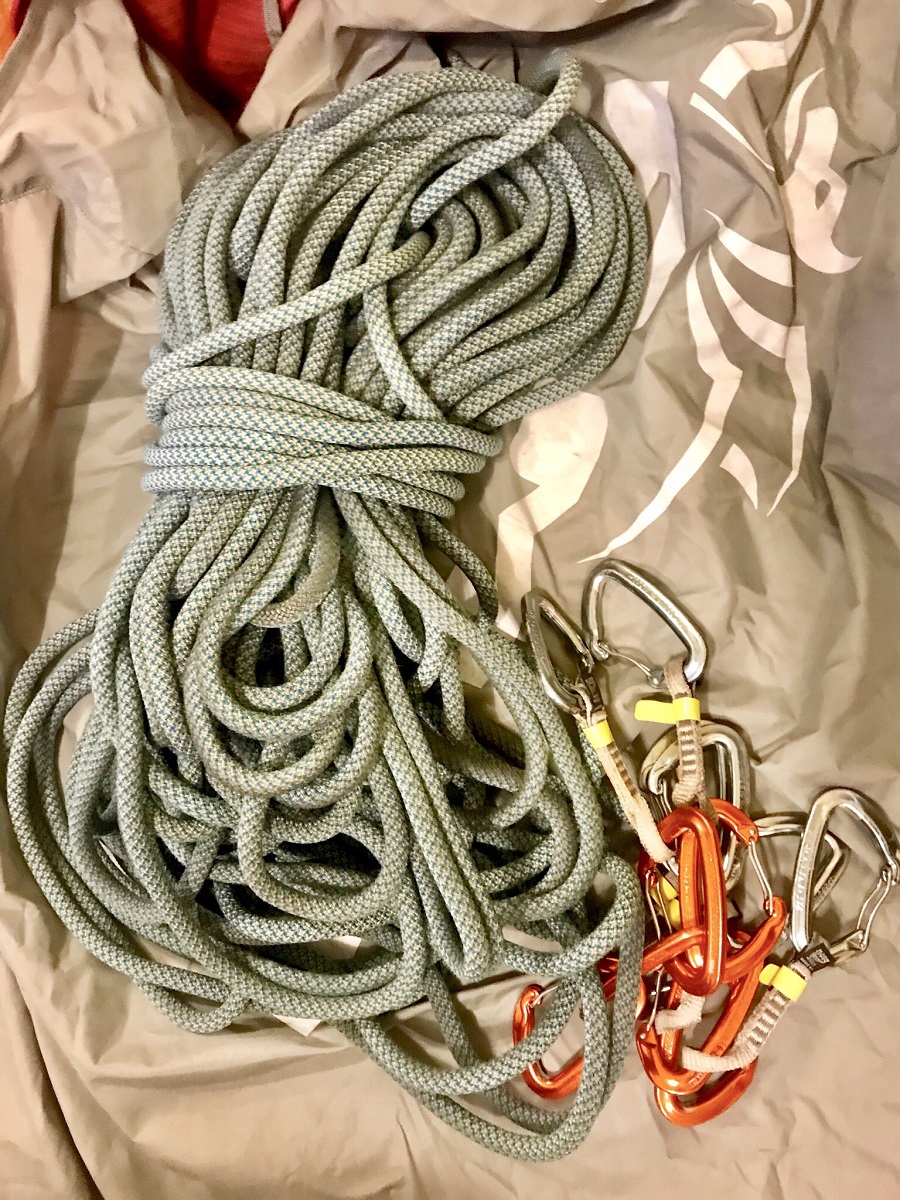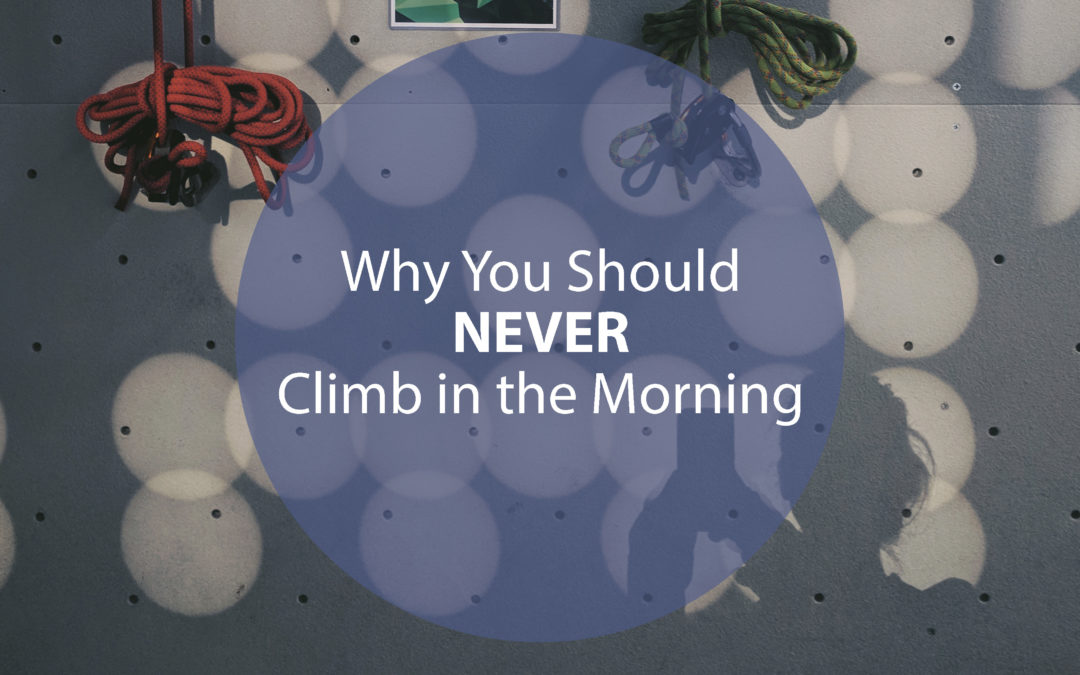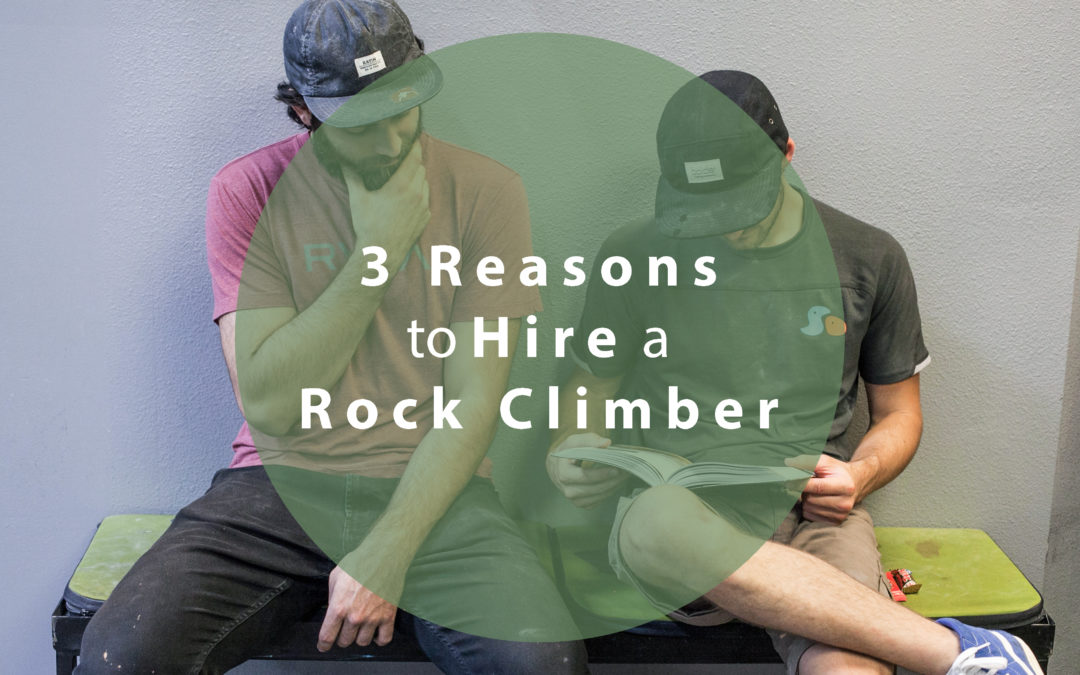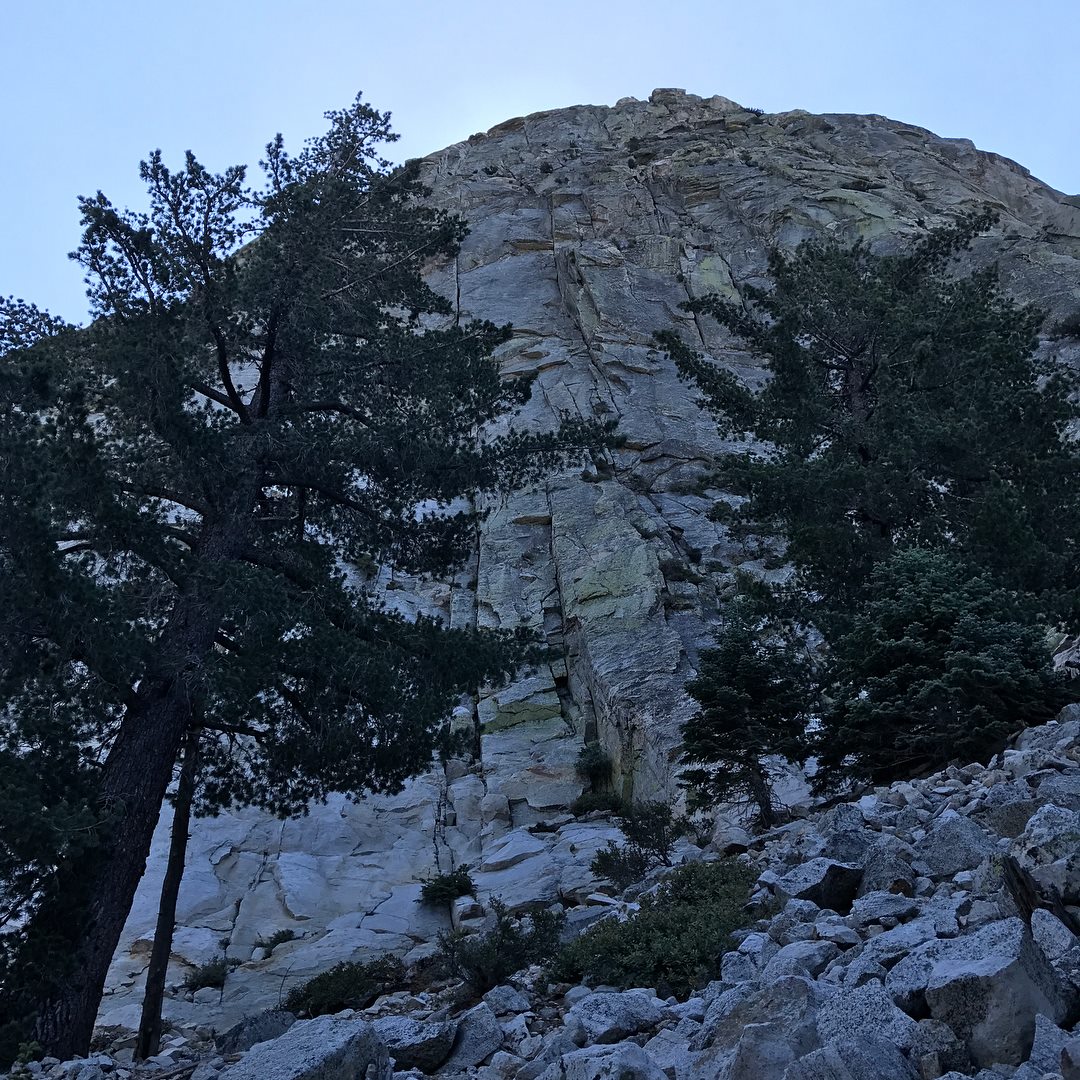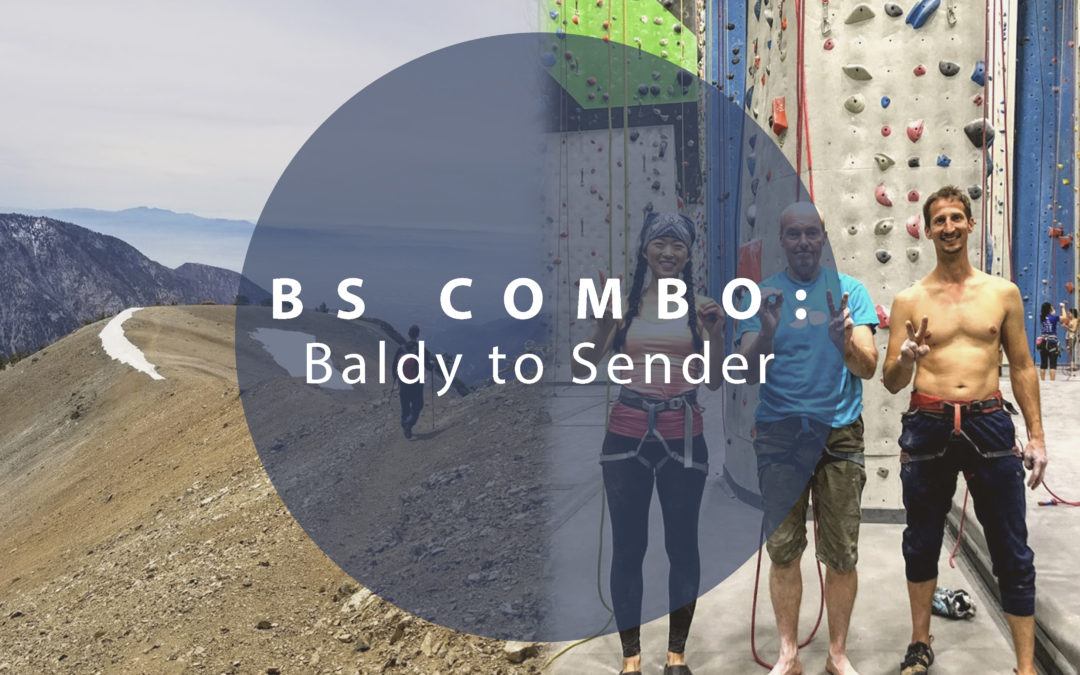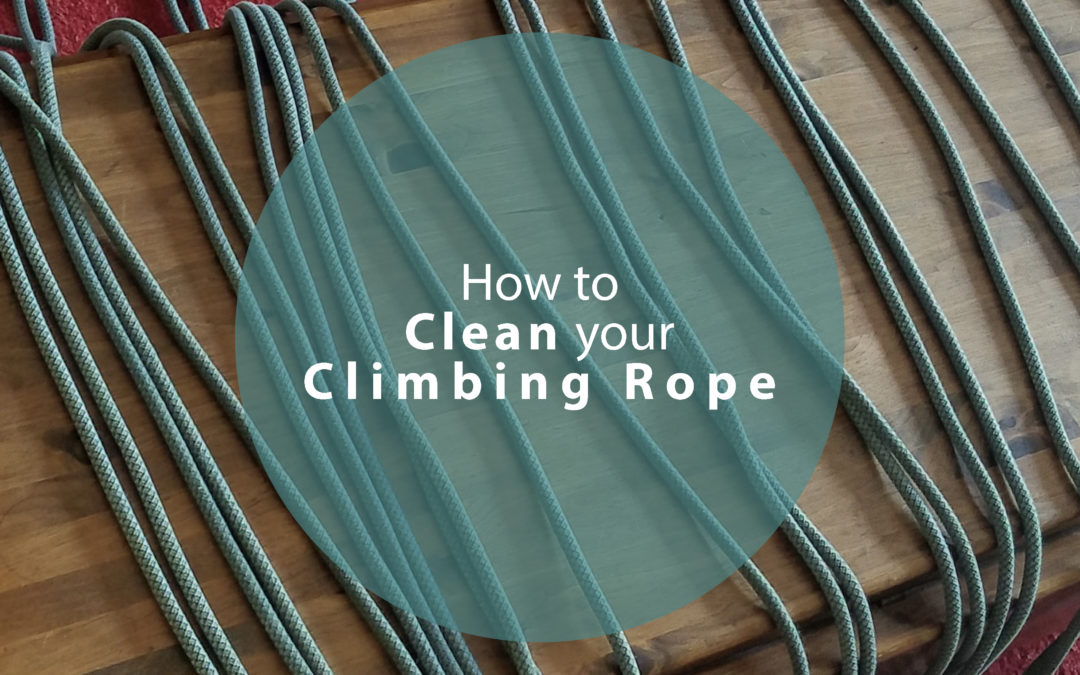
How to Clean Your Climbing Rope
the contentWords & Photos by Melody Yuan
I’ve had my trusted rope for two years. It’s dynamic, durable and my life depends on it.
It only seems right then, to make sure the rope’s well taken care of. While I’ve taken precaution to keep my rope on the tarp and not step on it when climbing outdoors, rinse it every few months, use a proper rope bag, and make sure it stays flaked when it’s not in use, I really only washed it for the first time two weeks ago.
My rope has journeyed up many routes and picked up dirt across different crags. My climbing friends can attest that I probably had the dirtiest rope among our regular climbing group. I used to pride myself on the fact that my rope was well used, but after belaying one day and noticing that my hands were black as night after only one climb, I decided it was time to wash it.
But how?
After talking to a few fellow climbers, reading threads and making a trip to REI, I was equipped and ready to take on the challenge.
What you need:
Tub, bucket or a sink that you don’t mind getting dirty
Rope soap (Editor's Note: Recommended. Other detergents are potentially damaging to ropes.)
Warm water
Gloves (optional)
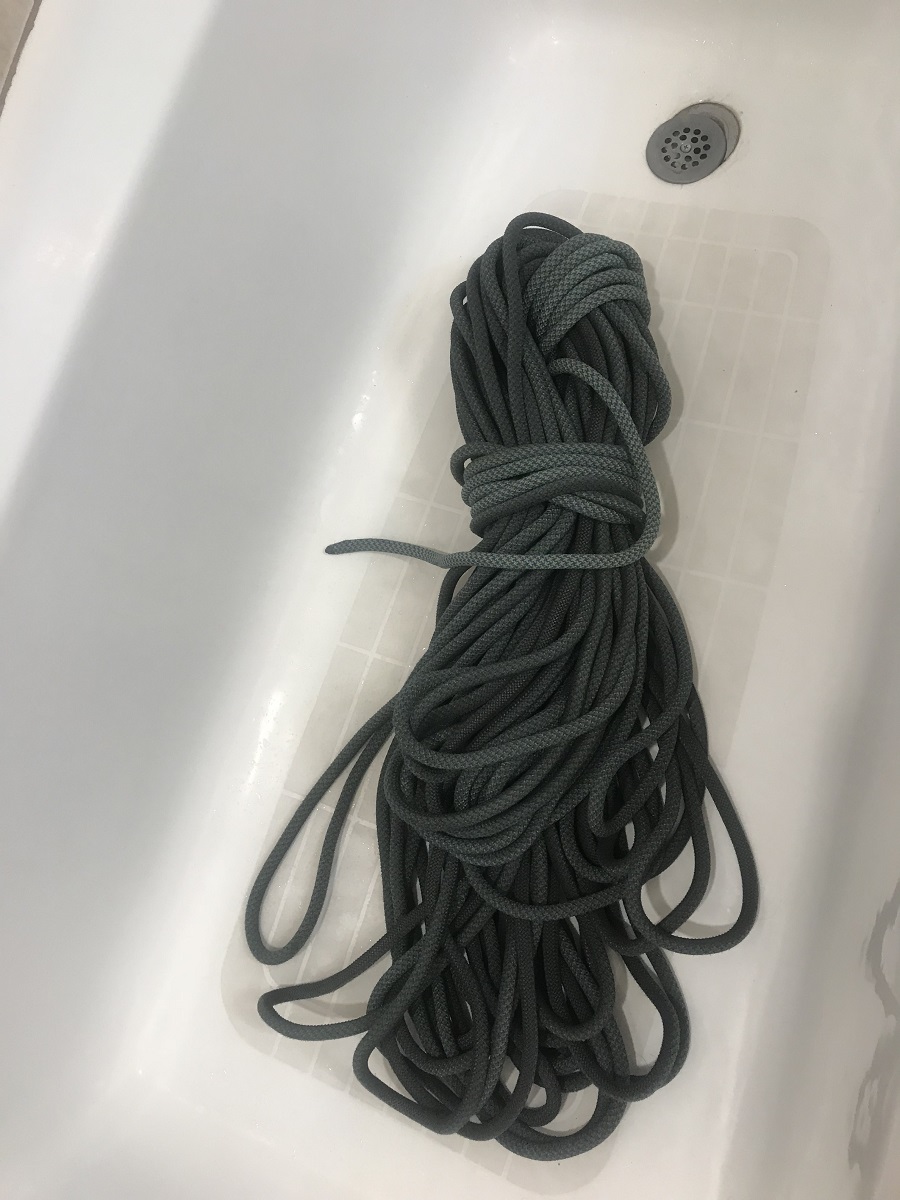
While cleaning the rope using just warm water may be a good enough solution, I decided to use the Edelweiss Rope Wash because my rope was too dirty for just water to clean. I have also heard of climbers throwing their rope into the washing machine*, but I would encourage washing the rope by hand. Who wants all that rope dirt in the washer where your clothes go anyway?
Step 1:
I used the bathtub at home and placed my filthy rope inside. Then, I filled the tub half way with lukewarm water. Editor's note: Washing your rope may stain your bathtub! Wash at your discretion.
Step 2:
Let the water soak. I left the rope in the tub for about 5 minutes. During this time, I cleaned the inside of my rope bag.
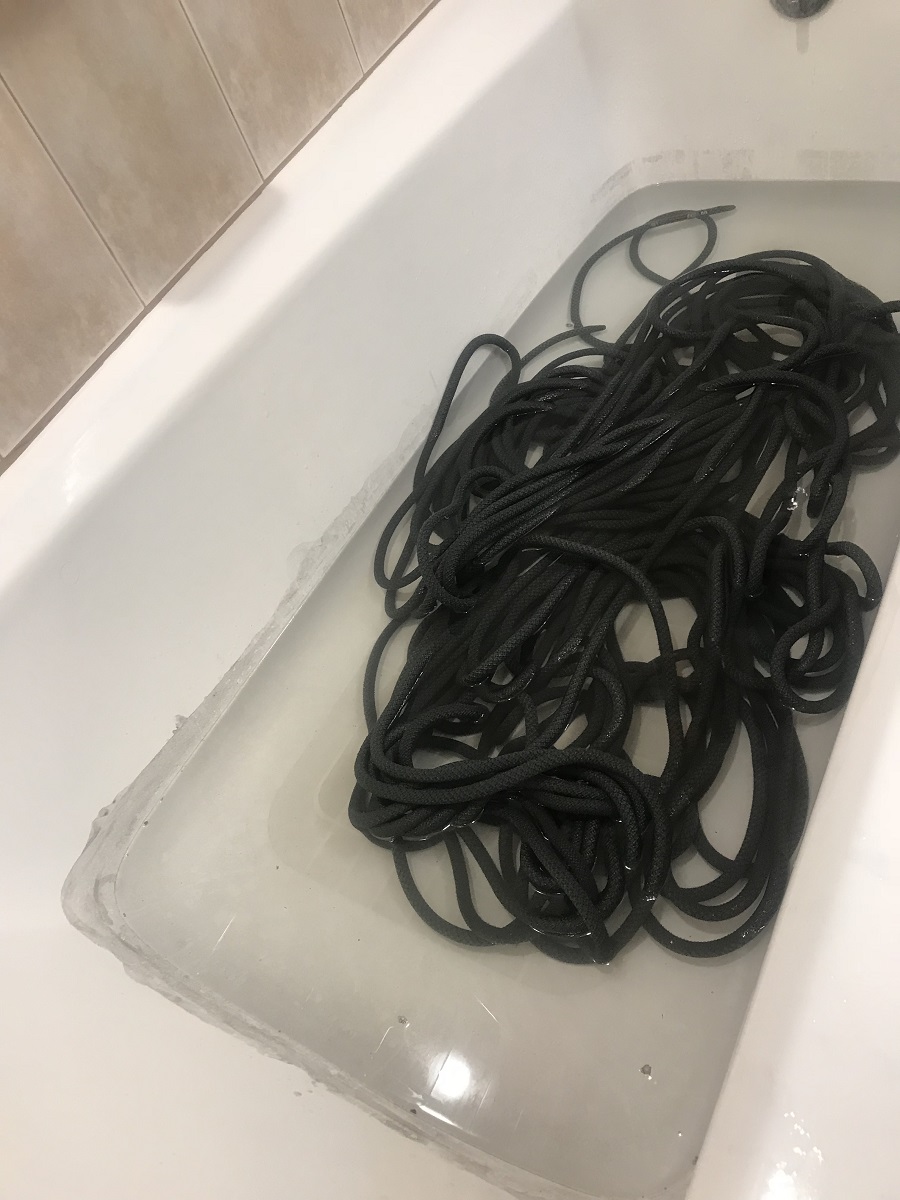
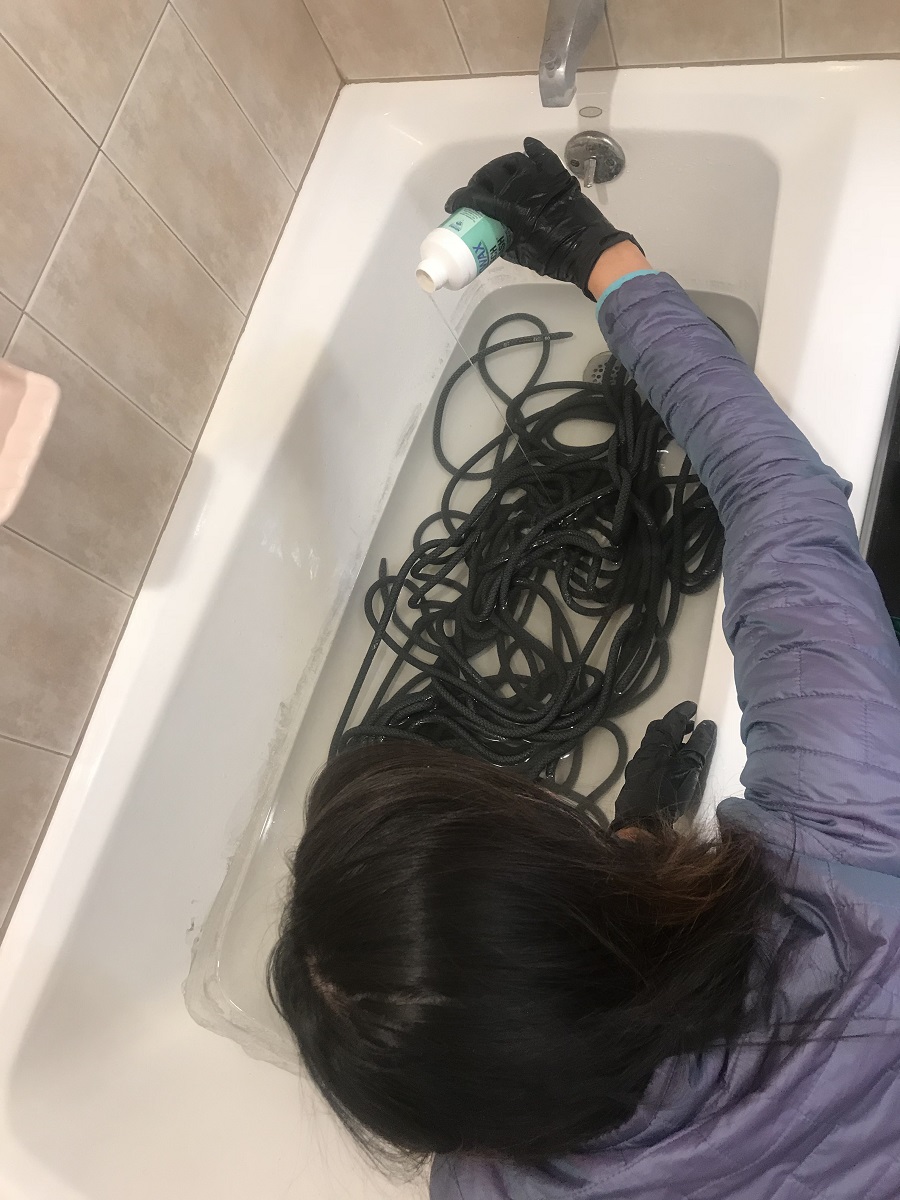
Step 3:
Swish it around. I pulled and squeezed the rope to make sure all the sediments were coming off, and that every inch of the rope had been in the water.
Step 4:
Add rope wash. If you’re intending to use a wash, a small amount will usually suffice in getting the grittier dirt out.
Step 5:
Scrub and Swish. Pull the entire length of your rope through your hands and scrub with your fingers.
Step 6:
Drain the water, rinse the rope and then refill the tub with clean water to rinse and/or scrub the rope again. I drained and refilled the tub four times before the water started getting clear again.
Step 7:
Dry thoroughly. Flake the rope out of the tub and lay it across a water-friendly area like a towel, balcony or shower-curtain rod. In my case, I laid it across the bike rack in my garage and away from direct sunlight.

Once it’s completely dry and looking brand new again, flake the rope one more time to make sure the rope is clean, tie the ends, and put it back into your rope bag. And voila! Guaranteed that the next time you go climbing, you’ll feel great pulling out some clean rope to set up on a new route.
To ensure that your rope stays in its optimum conditions, I would suggest doing the following:
- Store your rope in a dry place, away from heat and direct sunlight. Exposing the rope to too much direct sun can damage the fibers and fade the colors. This includes keeping the rope in your car on a hot day.
- Make sure that your rope is on a tarp or something similar when you climb outdoors, since dirt and sediment can easily get onto your rope. Also, you don’t want anyone to accidentally step onto your rope.
- Inspect your rope as you flake it to make sure there aren’t any fuzzy areas, cuts, flat spots or weird misshapes in your rope. It’s normal for a rope to get weaker over time, especially in the event that you’ve taken a huge fall or have owned the rope for more than a year, so this inspection is important**.
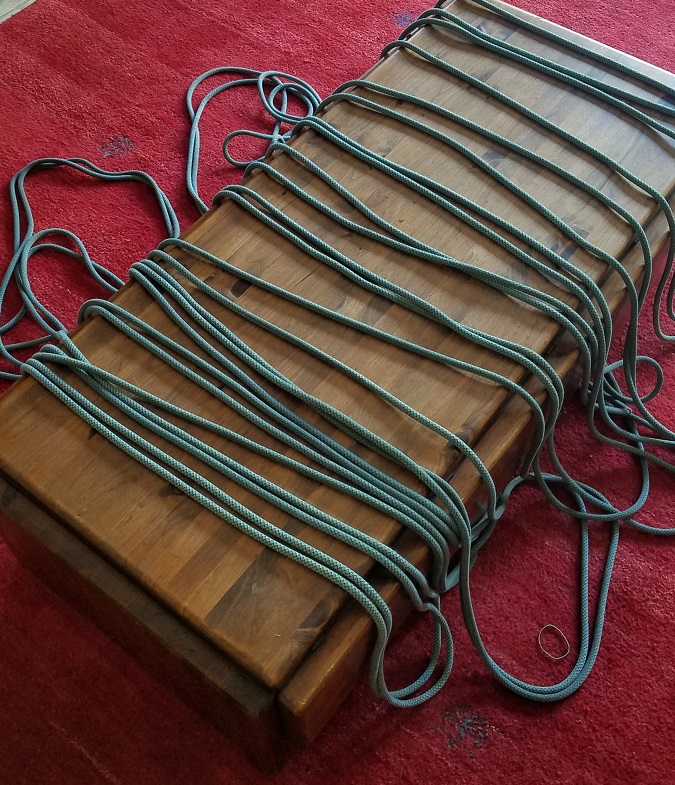
* Please research and wash your rope in a washing machine at your own discretion.
**This post is a general guide to maintaining your rope. If you are uncertain about the integrity of a rope, have it inspected by a professional. Sender One is not responsible for any rope failures via use of this guide.
